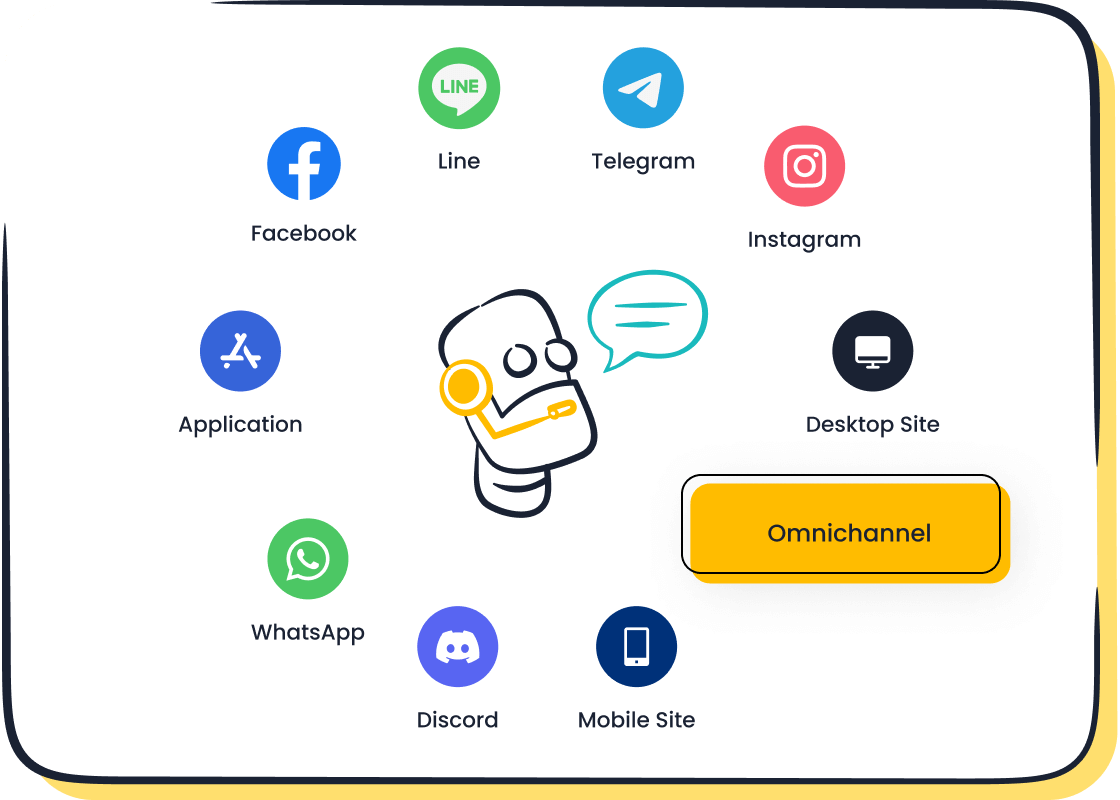How to Choose Customer Service Tools for Small Businesses

Running a small business means juggling many responsibilities, and customer service often takes center stage. The right tools can make your life easier by streamlining how you handle customer inquiries. They improve response times, offer personalized support, and help you manage interactions across multiple channels. This leads to happier customers and stronger loyalty.
But finding the best customer service tools isn’t always simple. Budget constraints, scalability concerns, and ease of use are just a few hurdles you might face. That’s why solutions like Sobot, designed to enhance efficiency and satisfaction, are worth exploring.
Understanding Customer Service Tools

What Are Customer Service Tools?
Customer service tools are software or platforms that help you manage and improve how you interact with your customers. These tools simplify tasks like responding to inquiries, tracking customer data, and offering support across different channels. They’re designed to make your job easier while ensuring your customers get the help they need quickly and efficiently.
Think of them as your secret weapon for delivering excellent customer service. Whether it’s a live chat platform for real-time communication or a chatbot that works 24/7, these tools allow you to focus on what matters most—building strong relationships with your customers.
How Customer Service Tools Improve Customer Experience
Good customer service is all about making your customers feel valued. Tools like chatbots and live chat platforms help you respond faster, which keeps your customers happy. Automating repetitive tasks also frees up your time to focus on more complex issues.
As much as 93% of customers are willing to spend more on a brand they trust, even if better options exist elsewhere.
By using tools like customer satisfaction surveys and data analytics, you can gather valuable insights into what your customers want. This helps you improve your service and create a more personalized experience. When you streamline communication and resolve issues quickly, you build loyalty and boost customer engagement.
Common Types of Customer Service Tools for Small Businesses
Here’s a quick look at some tools that can help small businesses like yours:
| Tool Type | Description |
|---|---|
| CRM Software | Centralizes customer interactions and data for personalized support. |
| Help Desk Software | Streamlines the process of handling customer inquiries and support requests. |
| Live Chat Platforms | Provides real-time communication options for quick customer support. |
| Chatbots and AI Assistants | Automates routine inquiries, offering 24/7 support without human intervention. |
| Knowledge Bases | Empowers customers to find answers independently through FAQs and guides. |
| Social Media Management | Monitors and engages with customer interactions across social platforms. |
| Analytics and Feedback | Collects data on customer interactions to provide insights for service improvement. |
These tools improve efficiency, enhance customer retention, and provide actionable insights for better service. Whether you’re using appointment scheduling tools or customer satisfaction surveys, the right tools can transform your customer experience.
Why Small Businesses Need the Best Customer Service Tools
The Role of Customer Service in Business Success
Customer service plays a huge role in how successful your business can be. It’s not just about solving problems; it’s about creating memorable experiences that keep customers coming back. When you deliver excellent customer service, you build trust and loyalty. This loyalty often leads to repeat purchases and even referrals, which are gold for small businesses.
Did you know that loyal customers are worth up to 10 times more than their first purchase? Plus, increasing customer retention by just 5% can boost profits by as much as 95%. That’s the power of good customer service. It’s also a way to stand out in a crowded market. When you make your customers feel valued, they’re more likely to choose you over competitors.
Challenges of Managing Customer Service Without Tools
Handling customer service manually can feel overwhelming, especially when you’re juggling multiple tasks. Without tools, it’s easy to lose track of customer inquiries or miss important details. This can lead to slow response times and frustrated customers.
Here’s the thing: 67% of customer churn happens because issues aren’t resolved on the first try. That’s a lot of lost opportunities. Managing everything without proper tools also makes it harder to gather feedback or analyze what’s working. You might end up spending more time and resources fixing problems that could’ve been avoided.
Benefits of Investing in the Right Tools
Investing in the right tools can transform how you handle customer service. These tools help you respond faster, automate repetitive tasks, and provide personalized support. For example, using data analytics can give you insights into customer behavior, helping you improve their experience.
Efficient tools also save you money in the long run. They reduce the need for extra staff and help you retain customers, which is far cheaper than acquiring new ones. Plus, excellent customer service boosts customer loyalty and engagement, leading to higher sales and stronger relationships. It’s a win-win for your business and your customers.
Key Factors to Consider When Choosing Customer Service Tools
Budget and Cost-Effectiveness
When choosing tools for small business customer service, budget is often the first thing on your mind. You want something that fits your financial plan without compromising quality. Start by identifying your business needs and comparing the features of different tools. Some tools offer free trials or tiered pricing, which can help you test their value before committing.
Did you know that investing in the right tools can save you money in the long run? By automating repetitive tasks, you reduce the need for extra staff and improve efficiency.
Here’s a quick breakdown of key criteria to consider:
| Criteria | Description |
|---|---|
| Business Needs | Tailor the tool to your specific requirements. |
| Cost Considerations | Ensure the tool is financially viable for your business. |
| Analytics | Look for tools that provide insights to track performance. |
Scalability and Future Growth
Your business might be small now, but what about next year? Scalability ensures your tools grow with you. A study by Forrester Consulting found that only 43% of support leaders feel their current technology can deliver personalized support. Don’t let outdated tools hold you back.
As your company grows, prioritizing customer service is just as important as developing your product.
Choose tools that can handle increased customer engagement and adapt to new challenges. This way, you won’t need to switch systems as your business expands.
Ease of Use and Accessibility
A tool is only as good as its usability. If your team struggles to use it, you’ll waste time and resources. Look for tools with a user-friendly interface and minimal training requirements.
Choosing an easy-to-use tool minimizes training time and promotes quick adoption.
For example, a well-organized, searchable library of resources can help your team find answers faster. This improves efficiency and ensures excellent customer service.
Integration with Existing Systems
Switching between platforms can slow you down. That’s why integration is key. Your tools should work seamlessly with your existing systems, like your CRM or email platform. This ensures smooth operations and better customer experience.
Prioritize tools that integrate well to avoid data silos and fragmented communication.
When everything works together, your team can focus on delivering good customer service instead of troubleshooting tech issues.
Customer Support and Training from Providers
Even the best tools come with a learning curve. That’s where provider support makes a difference. Look for companies that offer training, FAQs, and ongoing assistance. This ensures your team gets the most out of the tool.
Excellent customer service starts with the right training.
Providers who offer robust support help you implement tools effectively, leading to better customer engagement and loyalty.
Recommended Best Customer Service Tools for Small Businesses

Ticketing Systems for Streamlined Support
Ticketing systems are a game-changer for small business customer service. They help you organize and prioritize customer inquiries, ensuring no issue slips through the cracks. These tools assign unique tickets to each query, making it easier to track progress and provide timely resolutions.
For example, Sobot’s ticketing system automates workflows and manages service-level agreements (SLAs). It even supports email ticketing, so you can handle customer requests efficiently. By using a ticketing system, you can reduce response times and improve customer satisfaction, which is essential for building customer loyalty.
Live Chat Software for Real-Time Communication
Live chat software allows you to connect with customers instantly. It’s perfect for answering questions, solving problems, and even boosting sales. Did you know that 85% of customers feel satisfied when using live chat? Plus, 63% of customers are more likely to return to a website that offers a good live chat experience.
| Statistic | Source |
|---|---|
| 79% of businesses say offering live chat has had a positive effect on sales, revenue, and customer loyalty. | Kayako.com |
| 63% retention rate when employing live chat, proving its effectiveness in building lasting customer relationships. | source |
| 56% of customers aged 18 to 34 prefer live chat to phone. | Zoho.com |
| 85% of customers feel satisfied when using live chat. | source |
| 63% of customers are more likely to return to a website that offers a good live chat experience. | upscope.com |
Sobot’s live chat software takes it a step further by unifying messages from all channels into one workspace. This ensures you never miss an opportunity to deliver excellent customer service.
CRM Tools for Managing Customer Relationships
Customer relationship management (CRM) tools help you centralize customer data and interactions. They’re essential for providing personalized support and building strong relationships. Companies like Apple and Coca-Cola use CRM tools to understand customer needs and enhance customer engagement.
| Company | CRM Tool(s) Used | Key Strategy/Outcome |
|---|---|---|
| Apple | In-house CRM | Focus on customer-centric outlets and understanding customer needs. |
| Coca-Cola | Salesforce, SAP | Uses CRM for contact management and to inspire optimism through marketing campaigns. |
| Zara | CRM tools | Gathers customer feedback for inventory management and adapts to fashion trends. |
| Tesco | RightNow CRM | Enhances omnichannel communication and customer support across various platforms. |
| Uber | LiveRamp | Segments users for personalized campaigns and gains insights into customer interactions. |
| McDonald's | PowerCenter CRM | Manages customer contacts and enhances marketing efforts through data analysis. |
Sobot’s omnichannel solution integrates seamlessly with CRM systems, giving you a unified view of customer interactions across platforms.
Knowledge Base Platforms for Self-Service Options
A knowledge base empowers your customers to find answers on their own. This reduces the need for direct support and improves their overall experience. For instance, 22% of customers believe self-service articles help them get answers faster than other channels.
A knowledge base empowers support teams with readily available information, leading to faster resolutions and fewer escalations.
Sobot’s chatbot integrates with a knowledge base to provide instant replies, making it easier for customers to resolve common issues independently. This not only saves time but also enhances customer satisfaction.
Social Media Management Tools for Customer Engagement
Social media management tools help you monitor and engage with customers across platforms. They’re vital for improving customer engagement and building a community around your brand. Engaging with customers on social media fosters loyalty and satisfaction.
- Social media management tools enhance communication and customer interactions, leading to improved customer satisfaction and loyalty.
- Utilizing technology, such as CRM software and chatbots, allows small businesses to personalize customer interactions and provide 24/7 assistance.
Sobot’s omnichannel solution supports social media integration, ensuring you can manage all interactions from one place.
Sobot Chatbot: A Smart Solution for Small Business Customer Service

The Sobot AI Chatbot is a must-have for small businesses. It automates customer interactions, solving regular queries 24/7. This boosts efficiency and cuts costs. For example, it can reduce inbound discussion volume by 20% and achieve a 95% customer satisfaction rate.
| Metric/Outcome | Value |
|---|---|
| Reduction in inbound discussion volume | 20% |
| Increase in positive feedback | 96% |
| Correct answers provided by AI | 80% |
| Customer satisfaction rate | 95% |
| Self-service question resolution | 22.2% |
| Customer satisfaction score (CSAT) | 97% |
| Problem resolution rate | 85% |
| Customer happiness rate | 99% |
| Increase in sign-off rate | 35% |
| Increase in COD collection rate | 40% |

With its multilingual support and no-coding-required setup, the Sobot chatbot is perfect for delivering excellent customer service while saving time and money.
Tips for Implementing and Optimizing Customer Service Tools
Define Clear Goals and Strategies
Before diving into customer service tools, you need a clear plan. Start by identifying what you want to achieve. Are you aiming to reduce response times or improve customer satisfaction? Frameworks like SMART Goals or Objectives and Key Results (OKR) can help you set specific, measurable, and actionable targets. For example, you might aim to increase your first-response resolution rate by 20% within three months.
Pro Tip: Use tools that align with your business objectives. For instance, if proactive communication is your focus, choose tools that support real-time updates and notifications.
Train Your Team on New Tools
Even the best tools won’t work if your team doesn’t know how to use them. Regular training sessions are essential. Workshops, role-playing exercises, and online courses can help your team master new tools and improve their customer interactions.
- Focus on time-to-proficiency to ensure employees adapt quickly.
- Use role-playing to simulate real-life scenarios.
- Measure knowledge retention to track training effectiveness.
Training isn’t a one-time event. Ongoing sessions keep your team updated on best practices and new features.
Monitor Performance and Gather Feedback
Tracking performance is key to optimizing your tools. Use analytics to measure response times, resolution rates, and customer satisfaction scores. Platforms like Zoho CRM Plus let you create custom charts to monitor these metrics.
Gather feedback from both customers and employees. For example, PayPal used surveys to identify pain points, reducing customer issues by 40 million in a year. This kind of insight helps you fine-tune your approach and improve customer engagement.
Regularly Update and Optimize Tools
Customer needs evolve, and so should your tools. Regular updates ensure your systems stay efficient and relevant. Analyze data from ticketing systems to identify areas for improvement, like reducing complaint response times.
Surveys and feedback systems can guide these updates, helping you anticipate customer preferences and maintain customer loyalty.
Use Analytics to Enhance Customer Support
Analytics provide a goldmine of insights. Use reports to track key metrics like response times and satisfaction scores. Departmental reports can highlight team performance, while personal stats help agents self-assess and improve.
Data-driven decisions lead to better customer experiences. For example, analyzing chat transcripts can reveal common issues, allowing you to address them proactively.
Choosing the right customer service tools can transform your small business. They boost customer satisfaction, build loyalty, and help you stand out in a crowded market. Tools like live chat, CRMs, and chatbots simplify support and improve efficiency. Explore solutions like Sobot to create emotional connections and grow your business sustainably.
FAQ
What are the most important features to look for in customer service tools?
Focus on ease of use, scalability, and integration. Tools should also offer automation, analytics, and omnichannel support to improve efficiency and customer satisfaction.
Tip: Choose tools that align with your business goals and customer needs.
How can I ensure my team adopts new customer service tools effectively?
Provide hands-on training and ongoing support. Encourage feedback and create a knowledge-sharing culture to help your team feel confident using the tools.
Are customer service tools worth the investment for small businesses?
Absolutely! They save time, reduce costs, and improve customer retention. Happy customers are more likely to return and recommend your business to others. 😊
See Also
Essential Advice for Selecting Social Media Support Tools
Best Live Chat Solutions for Small Enterprises in 2024
2024's Leading Customer Support Software: Top Ten Picks